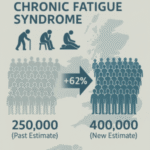Recognising the Critical Significance of Wildfire Evacuation Routes for Community Protection
Understanding the Essential Role of Evacuation Routes in Effective Emergency Preparedness

Wildfire evacuation routes are critical lifelines designed for communities that face the severe threat of destructive wildfires. These carefully planned pathways enable rapid and organised egress from high-risk areas, providing a clear escape route when danger strikes. With the increasing frequency of wildfires attributed to climate change and rising human activities, it is imperative for residents to understand the intricacies of these evacuation routes to safeguard their lives and well-being. In the event of a wildfire, every moment is precious; hence, having clearly marked and accessible wildfire evacuation routes is indispensable. Well-established pathways alleviate confusion and panic in emergencies, allowing residents to evacuate swiftly and effectively. In dire situations, having a well-coordinated evacuation strategy can be the deciding factor between survival and peril, highlighting the necessity for individuals to be thoroughly educated about this vital information.
Effective evacuation route design takes into account several crucial factors, including the local geography, population density, and the current state of infrastructure. For instance, urban environments typically showcase multiple designated routes leading to safe havens, whereas rural areas might rely on natural landmarks for navigation. The clarity and accessibility of these evacuation pathways can substantially impact the success of an evacuation effort. Furthermore, it is essential for communities to regularly review and rehearse their evacuation plans, ensuring preparedness for any emergency that may arise, thereby reinforcing community resilience.
Raising awareness of wildfire evacuation routes has become a top priority for local government authorities in regions that frequently face wildfire threats. Initiatives to foster awareness include the installation of clear signage, conducting community drills, and launching educational programmes aimed at informing residents about potential risks. The overarching goal is to cultivate a culture of preparedness, where individuals recognise their responsibilities and roles during an evacuation. When community members are informed about evacuation routes, they are more likely to act swiftly and decisively, thereby reducing chaos and enhancing overall safety during emergencies.
Exploring the Different Categories of Evacuation Routes for Preparedness
Evacuation routes can be classified into three distinct categories: primary, secondary, and emergency routes, each serving a specific function in evacuation scenarios. Primary routes are the main thoroughfares designated for the majority of individuals during a wildfire emergency. These pathways are typically well-marked and meticulously maintained, allowing evacuees to travel swiftly towards safety. For example, in wildfire-prone areas like California, primary wildfire evacuation routes often correspond with major roads capable of accommodating heavy traffic and facilitating efficient movement away from danger.
Secondary routes fulfil a critical role by providing alternative pathways for residents if primary routes become congested or obstructed. These routes are essential in ensuring that, even during peak evacuation times, residents have viable options to circumvent bottlenecks on heavily trafficked roads. Think of secondary routes as indispensable backup plans that communities must have in place. For instance, secondary roads may wind through less populated regions in hilly or mountainous areas, presenting a safer, albeit potentially lengthier, escape route for those evacuating.
Emergency routes are specifically designated for unforeseen circumstances, such as when a wildfire unexpectedly changes direction. While these routes may not be widely recognised or frequently used, they are fundamentally important for first responders and emergency services needing access to affected areas. Understanding all three types of Wildfire evacuation routes can significantly enhance a community's resilience and preparedness during crises, ensuring that residents are adequately equipped to handle any eventuality that may arise.
Ensuring Continuous Maintenance and Updates to Evacuation Routes for Maximum Safety
The overall effectiveness of wildfire evacuation routes heavily relies on consistent maintenance and timely updates. Regular inspections and necessary improvements are paramount to ensure these routes remain functional during emergencies. Factors such as overgrown vegetation, damaged signage, or infrastructure problems can severely hinder evacuation efforts. Thus, local authorities and community organisations must prioritise maintenance activities, particularly in regions frequently affected by wildfires, to guarantee that evacuation routes are both safe and accessible for residents in times of need.
Moreover, as urban development progresses, it may become necessary to reassess and update existing evacuation routes. New constructions could obstruct current pathways or introduce additional hazards, making it crucial to conduct comprehensive reviews of evacuation strategies. Public awareness campaigns play a vital role in this process; communities must be informed about any modifications to evacuation routes, utilising local media, social platforms, and community meetings to disseminate information effectively. Ensuring that the public is well-informed is a key component of maintaining safety and preparedness.
Technological advancements can significantly enhance the maintenance and regular updating of these routes. Geographic Information Systems (GIS) facilitate real-time data collection and analysis, enabling authorities to visualise landscape changes and adjust plans accordingly. Furthermore, integrating GPS technology into public awareness initiatives can help residents stay informed about optimal routes during evacuations. Regularly updated maps and digital resources ensure that communities are well-prepared for wildfire emergencies, thereby enhancing their overall resilience and safety.
Strategically Planning Your Evacuation Route for Enhanced Safety

Evaluating Your Location's Proximity to Wildfire Hazards
Understanding your proximity to potential wildfire zones is the foundational step in effective evacuation planning. Each region possesses a distinct risk profile influenced by factors such as geography, climate, and human activities. For instance, communities situated near forests or grasslands face heightened risks and must thoroughly evaluate their vulnerabilities. A comprehensive risk assessment should involve identifying the nearest safe evacuation points, often located in community centres or designated shelters equipped to assist evacuees during emergencies.
It is equally critical to assess the time it may take to reach these safe havens. During a wildfire, traffic congestion can significantly delay evacuations, making knowledge of local geography essential. By pinpointing which routes may be quicker or safer, individuals can minimise their exposure to danger. Conducting personal evacuation drills can be incredibly advantageous, allowing you to familiarise yourself with the terrain and identify potential obstacles that could impede your escape.
Community resources, such as local fire departments or emergency management agencies, often provide valuable information regarding wildfire risk assessments. Engaging with these resources can offer clearer insights into your situation and enable you to develop a tailored evacuation plan that considers your specific needs and circumstances. In matters of safety, knowledge truly is power, especially when it could mean the difference between life and danger.
Creating Comprehensive Maps Featuring Multiple Evacuation Routes
Developing detailed maps that outline multiple evacuation routes is crucial for maximising your chances of a safe escape during a wildfire. Relying solely on one route during emergencies can lead to catastrophic delays; therefore, identifying various potential paths allows for adaptability based on real-time conditions. For instance, if traffic becomes heavy on your primary route, knowing alternative paths enables you to pivot quickly and effectively, thus ensuring your safety.
When mapping out your routes, consider integrating a diverse range of pathways. A combination of main roads and lesser-known side streets may provide options that facilitate a quicker evacuation. Additionally, understanding the terrain can offer insights into which routes may be safer or more efficient. For example, while a route may appear shorter on a map, it could traverse areas prone to landslides or flooding, rendering it hazardous during an emergency.
Utilising technology can significantly enhance effective route planning. Mobile applications and GPS devices provide real-time traffic updates, enabling you to make informed decisions while on the move. Moreover, keeping printed maps of your local area can prove invaluable should technology fail during a crisis. A comprehensive map outlining all potential evacuation routes can serve as an essential reference point, ensuring all family members are aware of the best escape options in case of an emergency.
Effectively Communicating Your Evacuation Plan for Family Preparedness

Effectively communicating your evacuation plan to family members and neighbours is paramount for enhancing overall preparedness. A well-informed community can significantly improve safety during a wildfire emergency. Organise family meetings to discuss your evacuation routes, designated meeting points, and emergency contacts. This practice ensures that everyone is aligned and ready to act quickly when necessary, minimising the risk of confusion and chaos in critical moments.
Additionally, consider connecting with your neighbours to establish a community-wide understanding of evacuation plans. By sharing information and resources, you can create a vital supportive network during crises. Community meetings, social media groups, and local newsletters can serve as effective platforms for disseminating critical information about wildfire evacuation routes and best practices, ensuring that everyone is on the same page and prepared for emergencies.
Furthermore, practising your evacuation plan as a family or community can build confidence and improve response times during an actual emergency. Implementing drills that allow everyone to familiarise themselves with the routes and necessary procedures is a proactive step towards preparedness. The more prepared you are, the better equipped you will be to confront a wildfire threat, ensuring that your evacuation process runs smoothly and effectively.
Thoroughly Preparing for Evacuation in Advance
Essential Emergency Kits and Supplies for Comprehensive Safety
Assembling thorough emergency kits filled with essential supplies is a fundamental step in the evacuation preparation process. These kits should include water, non-perishable food, first aid supplies, flashlights, and personal hygiene products. The goal is to create a well-rounded kit capable of sustaining you for several days if necessary. Having a ready-to-go emergency kit can be the difference between chaos and a well-organised evacuation in regions prone to wildfires.
Incorporating important documents into your emergency kit, including identification, insurance papers, and medical records, is crucial. Having these documents readily available can streamline processes post-evacuation, especially when dealing with insurance claims or recovery services. Additionally, do not overlook including items specific to your family’s needs, such as medications or supplies for pets, to ensure that all members of your household are adequately cared for during an emergency.
Regularly updating your emergency kit is essential; check the expiration dates on food and medications and rotate supplies as needed. Engaging family members in this process ensures everyone understands the importance of being prepared for potential emergencies. This shared responsibility fosters a culture of safety that can prove invaluable during crises, reinforcing the need for readiness in the face of potential dangers.
Ensuring Your Vehicle is Prepared for Immediate Evacuation
One of the simplest yet most effective measures you can take is to ensure that your vehicle is always ready for rapid evacuation. Start by maintaining a full tank of petrol, as fuel shortages can occur during high-demand emergencies. Regular maintenance checks are essential to ensure that your vehicle is in optimal condition and capable of handling the stresses associated with an evacuation scenario. A well-maintained vehicle can serve as your lifeline during an emergency.
Prepare your vehicle with maps, an emergency kit, and extra clothing. This readiness allows for spontaneous travel, enabling you to leave at a moment's notice. Additionally, familiarising yourself with various routes ensures you can navigate effectively, even if the most direct path is obstructed or unavailable. Having a well-thought-out vehicle emergency strategy can provide peace of mind during a crisis.
Incorporating a family evacuation plan into your vehicle readiness can help create a seamless exit strategy. Ensure everyone knows how to access the vehicle, where emergency supplies are stored, and the planned routes. A well-prepared car can act as your lifeboat during a wildfire crisis, guaranteeing you are ready when it matters most.
Importance of Communication Devices During Emergencies
Keeping communication devices charged and easily accessible is pivotal during an evacuation. In our interconnected world, staying informed and connected significantly impacts your safety. Always ensure that your mobile phones are fully charged, and consider investing in portable chargers to maintain power during emergencies when access to electricity may be limited. A reliable means of communication can facilitate coordination and connection with loved ones.
Furthermore, familiarise yourself with local emergency communication systems. Many regions have adopted alert systems that send notifications directly to residents during crises. Signing up for these alerts can provide timely updates on evacuation routes, safety measures, and real-time wildfire developments, ensuring you remain well-informed and prepared for any situation that may arise.
Consider additional communication tools, such as two-way radios, particularly if you are in remote areas where cell service may be unreliable. Regularly testing these devices ensures they are operational and ready for use when required. During an evacuation, maintaining communication with loved ones can provide peace of mind and aid in coordinating efforts, making the process smoother and more organised for everyone involved.
Familiarising Everyone with Your Comprehensive Evacuation Plan
Regularly reviewing and practising your evacuation plan is critical for ensuring all family members are familiar with the routes and designated meeting points. This practice fosters confidence and reduces panic during emergencies. Conduct drills that simulate the conditions of an actual evacuation, emphasising the importance of quick decision-making and adherence to the established plan. The more prepared you are, the better equipped you will be to manage an evacuation efficiently.
Involving children in these drills is especially beneficial. Teaching them the significance of evacuation routes, safe meeting places, and emergency contacts empowers them while instilling a sense of responsibility. Additionally, consider employing engaging methods, such as games or storytelling, to make the learning process enjoyable and memorable, ensuring that the information is retained long-term in their memory.
Utilising technology, such as apps or interactive maps, can enhance your family’s understanding of the evacuation routes. Encourage family members to familiarise themselves with these tools, ensuring they can navigate successfully during an emergency. A well-practised evacuation plan transforms a potentially chaotic situation into a manageable one, providing peace of mind for everyone involved and making the process more efficient.
Effectively Navigating During an Evacuation for Enhanced Safety
Utilising GPS and Maps for Accurate Navigation During Emergencies
Navigating evacuation routes effectively requires a combination of GPS technology and physical maps. While GPS provides real-time data on traffic flow and conditions, having a backup plan in printed maps is prudent. Cellular networks can become congested or fail during emergencies, making alternative navigation methods readily available and crucial for your safety and timely evacuation.
Familiarise yourself with both digital and physical maps of your area, noting important landmarks, potential hazards along your route, and alternative pathways. Understanding how to read a map can be an invaluable skill, especially if technology fails. Additionally, regularly updating maps to reflect recent road conditions or infrastructure changes is essential for effective navigation during emergencies.
During an evacuation, time can be of the essence. Utilising GPS apps that offer live updates and alternative routes can help you avoid congested areas, ensuring a quicker escape. Planning ahead saves precious minutes and could potentially make a significant difference in your safety. Combining GPS and physical maps equips you with the necessary tools for a successful evacuation, ensuring you can reach safety without unnecessary delays.
Adhering to Official Directives for a Safe Evacuation Experience
Following instructions from emergency services and authorities is crucial for ensuring a safe and efficient evacuation. Official updates often provide essential information regarding conditions, road closures, and safe zones, allowing residents to make informed decisions. During a wildfire evacuation, relying on official channels, such as emergency services, local news, and social media, keeps you up to date with the latest developments and safety protocols.
Local authorities are trained to handle emergencies and have access to information that may not be immediately available to the public. Adhering to their directives can significantly enhance your safety and the safety of those around you. This includes understanding when to evacuate, which routes to take, and where to find temporary shelter, ensuring you are well-prepared for the challenges ahead.
It’s essential to remain calm and focused when receiving information from official sources. Panic can lead to poor decision-making and confusion. Instead, view these directives as valuable guidance that can help you navigate the chaos of a wildfire emergency. A collective response based on official guidance can make all the difference in a community's resilience during crises, reinforcing the importance of cooperation and compliance in times of need.
Adapting to Road Closures During Evacuations for Enhanced Safety
Being prepared to adapt your route during road closures or blockages is vital during a wildfire evacuation. Recognising that conditions can change rapidly allows you to remain flexible and responsive. Familiarise yourself with multiple routes and keep alternative paths in mind; this knowledge can help ease stress and enhance safety during the evacuation process.
Utilising real-time maps and navigation apps can provide updates on road closures and suggest alternative routes. Additionally, listening for updates from emergency services can inform you of hazards or blocked roads, ensuring you stay informed and prepared. Being aware of your surroundings and maintaining a calm demeanour during this time will enable you to make quick decisions without compromising safety.
If you encounter a road closure, avoid backtracking or attempting to navigate through closed areas. Instead, reassess your options and pivot to alternative routes. This adaptability is key to maintaining safety while working towards a secure destination. Flexibility and preparedness can transform a potentially dangerous situation into a manageable escape, ensuring that you and your loved ones reach safety without unnecessary risk.
Implementing Safety Measures During Evacuation for Health Protection
Strategies for Protecting Against Smoke Inhalation During Evacuations
Protecting against smoke exposure during a wildfire evacuation is crucial for your health and safety. Wildfire smoke can contain harmful particles that may lead to respiratory issues or exacerbate existing health conditions. Masks, particularly N95 respirators, can effectively minimise exposure to these harmful pollutants, providing an additional layer of protection for your respiratory health during such emergencies.
Furthermore, keeping vehicle windows closed during evacuation can help reduce smoke infiltration. Adjusting your vehicle's ventilation system to recirculate air can prevent outside smoke from entering, thereby offering an extra layer of safety for all occupants. Additionally, consider carrying extra masks and protective gear in your emergency kit to ensure adequate supplies for everyone in your family, reinforcing the importance of preparedness for all household members during such critical times.
It's not just about immediate safety; understanding the long-term effects of smoke exposure is equally important. Prolonged exposure can lead to chronic respiratory issues, so taking these precautions seriously can safeguard your health during and after an evacuation. Being proactive about your safety measures is essential to any comprehensive evacuation plan, ensuring you are equipped to handle the challenges posed by wildfires effectively.
Driving Safely in Low Visibility Conditions During Evacuations
Driving cautiously in low-visibility conditions is of the utmost importance during a wildfire evacuation. Smoke can severely limit visibility, making it challenging to navigate safely. When driving in such conditions, always use your headlights, even during the day. This practice increases your visibility to other drivers and helps you see better in the hazy environment, ensuring safer travel for everyone on the road.
Adapting your speed to the conditions is equally important. Reducing your speed allows for safer navigation, giving you more time to react to unexpected hazards. Maintain a greater distance between vehicles to enable safe stopping when necessary. Avoid sudden movements or lane changes, as these can lead to accidents in low-visibility situations, jeopardising your safety and that of others on the road.
If conditions become too severe, consider pulling over to a safe location until visibility improves. Remaining patient and calm during these moments is essential for safety. Prioritising safety over speed can significantly enhance your chances of reaching safety unscathed, reinforcing the importance of cautious driving during wildfire emergencies and the need for vigilance in challenging conditions.
Avoiding High Fire-Risk Areas During Evacuation for Enhanced Safety
Steering clear of areas with a high fire risk during evacuation is crucial for minimising danger during critical moments. Wildfires can spread rapidly, and it’s essential to remain aware of the risks associated with specific regions. Pay close attention to local alerts and advisories that provide information on fire-prone areas, adjusting your evacuation routes accordingly to ensure maximum safety and effectiveness during the evacuation.
Understanding your region's geography can also help you identify safer paths. Areas with dense vegetation, steep terrain, or high winds are typically at greater risk for wildfires. By selecting routes that bypass these hazards, you can enhance your safety during an evacuation, ensuring that you remain out of harm's way as much as possible, thereby promoting a successful evacuation experience for you and your loved ones.
Community resources often provide valuable insights into areas to avoid during wildfire situations. Engaging with local emergency services and utilising available resources can help you stay informed. Proactively avoiding fire-prone areas reinforces the essence of preparedness during wildfire emergencies, ensuring you and your loved ones remain safe while navigating the challenges of an evacuation.
Key Post-Evacuation Procedures for Ensuring Safety and Recovery
Checking In with Authorities After Evacuation for Accountability
Reporting your safe arrival to emergency services after evacuation is vital for assisting them in managing the overall evacuation process. This check-in allows authorities to account for residents, ensuring that everyone is accounted for and enabling them to allocate resources effectively. It also aids in assessing which areas may still be at risk and require further assistance, helping them to provide targeted support where needed.
Many local emergency services offer specific channels for evacuated individuals to report their status. Utilising these resources can help streamline communication and ensure that vital information is shared with those who need it. Establishing a clear communication line between residents and authorities enhances safety and community cohesion during crises, fostering a sense of trust and collaboration among community members.
Moreover, staying informed about the evolving situation after evacuation is essential. Authorities often issue updates regarding the safety of returning to homes, potential hazards, and available resources. Keeping in contact with local news agencies or following social media updates can help residents stay informed and prepared for the next steps in their recovery journey, ensuring a smoother transition back to normalcy.
Assessing Damage and Ensuring Safety Before Returning Home After Evacuation
Evaluating the safety of your property and the extent of damage before returning home after evacuation is critical. While the instinct may be to rush back, taking the time to assess conditions can prevent additional risks. Look for authority updates indicating that it is safe to return, and be vigilant for potential hazards such as downed power lines or lingering smoke that could threaten your safety and well-being upon return.
When returning home, consider bringing safety equipment, such as masks, gloves, and a first aid kit. Conducting a thorough walkthrough of your property allows you to note any damage and assess safety before fully re-entering. If conditions appear dangerous or uncertain, do not hesitate to report issues to local authorities, prioritising your safety above all else during this critical time.
Assessing damage post-evacuation can also aid in insurance claims and recovery efforts. Documenting any destruction through photographs or videos can serve as valuable resources in discussions with insurance providers, helping to streamline the claims process. Being methodical and cautious in this step can facilitate recovery, allowing you to focus on rebuilding and restoring your life after a wildfire.
Strategies for Reuniting with Family Members After Evacuation
Establishing a meeting point and communication plan for reuniting with family members after evacuation is essential for effective coordination. Clear communication can significantly reduce anxiety during this typically stressful time. Select a predetermined safe location where family members can gather, ensuring that everyone is aware of this meeting point for easy identification during emergencies.
Technology can assist in the reunion process. Sending text messages or using social media platforms can help coordinate efforts and keep everyone informed. In areas with unreliable cell service, consider investing in walkie-talkies or other communication devices that can help maintain contact, ensuring that everyone stays connected throughout the ordeal.
Engaging in open discussions with family members about your reunion plan can foster a sense of security and readiness. Making this part of your evacuation plan can significantly ease worry during emergencies. When everyone is aligned and informed, reuniting becomes a manageable and reassuring process, allowing you to focus on the well-being of your loved ones during a challenging time.
Accessing Support Services for Recovery After Evacuation
After an evacuation, seeking assistance from available support services is crucial for recovery. Shelters, food banks, and counselling services can provide much-needed resources for individuals and families affected by wildfires. Researching local support services ahead of time can help ensure you know where to turn in times of need, facilitating a smoother recovery process.
Community organisations often mobilise to provide resources for those impacted by wildfires. Engaging with these organisations can offer immediate relief and connect you with long-term support options. Whether you require temporary housing, food, or emotional support, contacting local services can facilitate your recovery process and help you navigate the challenges ahead with greater assurance and security.
Accessing support services also involves understanding the resources available through governmental and non-governmental organisations. Many regions have established systems for assisting residents during and after emergencies. Being aware of these options can help you navigate the recovery landscape more efficiently and effectively, ensuring that you receive the help you need in a timely manner.
Implementing Community Evacuation Strategies for Enhanced Safety and Preparedness
Collaborating with Neighbours for Effective Community Evacuation Planning
Working collaboratively with neighbours to develop a community-wide evacuation plan is a proactive approach that enhances safety during wildfire emergencies. A collective strategy allows for shared resources, knowledge, and support, creating a stronger network within the community. Consider organising meetings where residents can discuss potential evacuation routes, share insights on local conditions, and establish emergency communication channels that facilitate coordination during crises.
Creating a neighbourhood directory that includes contact information for all residents can aid in coordination efforts. This resource enables quick communication and assists in checking in on vulnerable individuals, such as the elderly or those with mobility challenges. Building a sense of community preparedness fosters resilience and ensures that everyone is equipped to handle emergencies effectively, reinforcing the importance of collaboration and mutual support.
Moreover, encouraging involvement in local emergency preparedness initiatives can strengthen community bonds. Participating in local drills, workshops, and training sessions enhances your collective understanding of evacuation protocols and response strategies, ensuring that the community is well-prepared for future emergencies. When communities work together, they create a robust support system that can significantly improve responses during wildfires, fostering a strong sense of cooperation and mutual aid among residents.
Frequently Asked Questions About Wildfire Evacuation Routes and Preparedness
What exactly are wildfire evacuation routes?
Wildfire evacuation routes are designated pathways that ensure safe and efficient exits from areas at risk of wildfires, facilitating quick movement away from danger zones and towards safety.
How can I assess my location's risk of wildfires?
To assess your wildfire risk, evaluate your proximity to natural fire hazards, review local fire risk assessments, and consult community resources for insights into potential wildfire threats in your vicinity.
Why is it essential to have multiple evacuation routes?
Having multiple evacuation routes increases your chances of a safe escape during a wildfire by providing alternatives if primary routes are blocked or congested, ensuring that you can reach safety quickly and efficiently.
What should I include in my emergency kit for evacuation?
To ensure comprehensive preparedness, your emergency kit should include water, non-perishable food, first aid supplies, important documents, and items specific to your family’s needs, such as medications and pet supplies.
How can I prepare my vehicle for evacuation?
Ensure your vehicle is regularly maintained, has a full petrol tank, and is equipped with an emergency kit that includes maps, food, and supplies to facilitate a quick and effective evacuation.
What communication devices should I have during an evacuation?
Keep mobile phones charged, consider portable chargers, and invest in two-way radios for reliable communication, particularly in areas where cell service may be unreliable during emergencies.
How should I navigate during a wildfire evacuation?
Utilise GPS and physical maps for effective navigation, stay updated with official directives, and be prepared to adapt your route based on real-time conditions to ensure a safe evacuation.
What safety measures should I take during an evacuation?
To minimise danger during the evacuation process, protect yourself from smoke by wearing masks, driving cautiously in low visibility, and avoiding areas with high fire risks.
What steps should I take after evacuation?
Check in with authorities, assess property safety, reunite with family, and seek assistance from local support services to aid your recovery and ensure your well-being after the evacuation.
How can communities work together for evacuation preparedness?
Communities can develop coordinated evacuation plans, establish communication networks, and engage in local preparedness initiatives to enhance resilience and response effectiveness during wildfires.
Explore our world on X!
The post Wildfire Evacuation Routes: Essential Planning Tips appeared first on Survival Bite.
The Article Wildfire Evacuation Routes: Key Planning Strategies Was Found On https://limitsofstrategy.com

